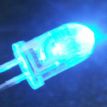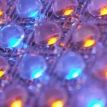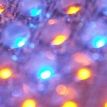Energy-Efficiency-Classification
The EU directive 98/11/EG of the commision dated January 27th, 1998 desribes the labling of lamps
(figure on top of the page). Although LED-lamps are not explicitly mentioned there LED-lamps using state of the art
LEDs (year 2011) are able to reach class A.
For example typical values are shown in the table (left side):
energy saving light bulbs reach class A - B, Halogen bulbs C - D, normal light bulbs E - F.
We do not lable our lamps and spots in this way as officially this is not specified today for LEDs.
However we use this as an indication to promote the energy saving level of LEDs. |





